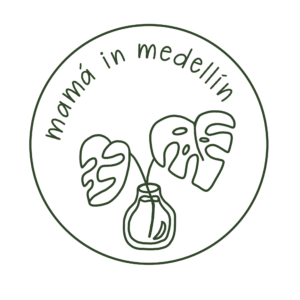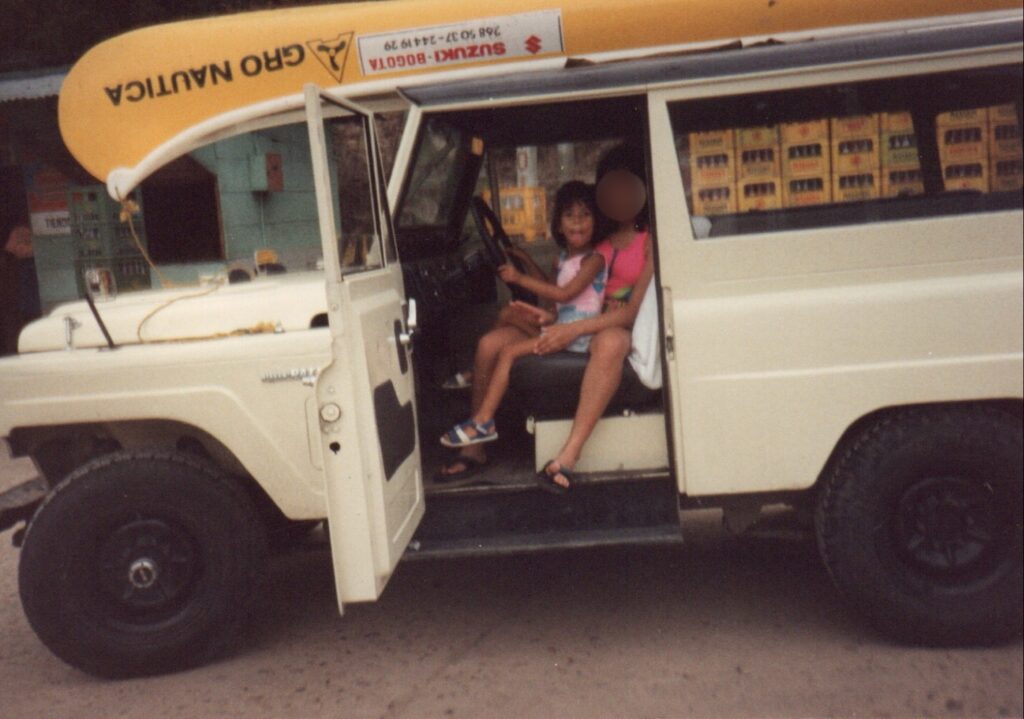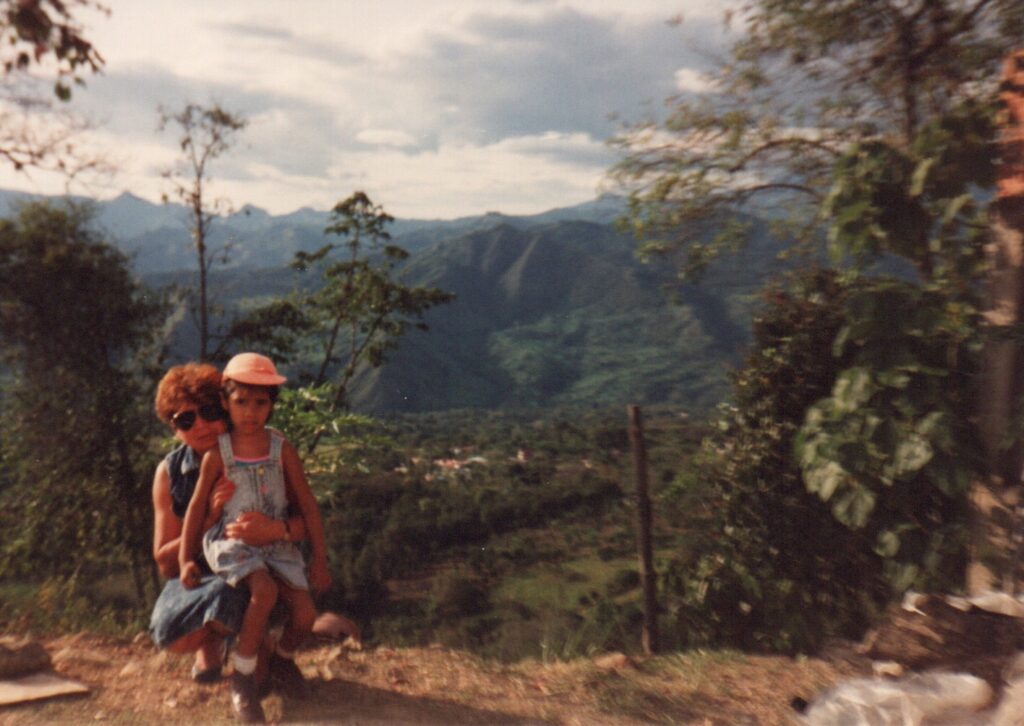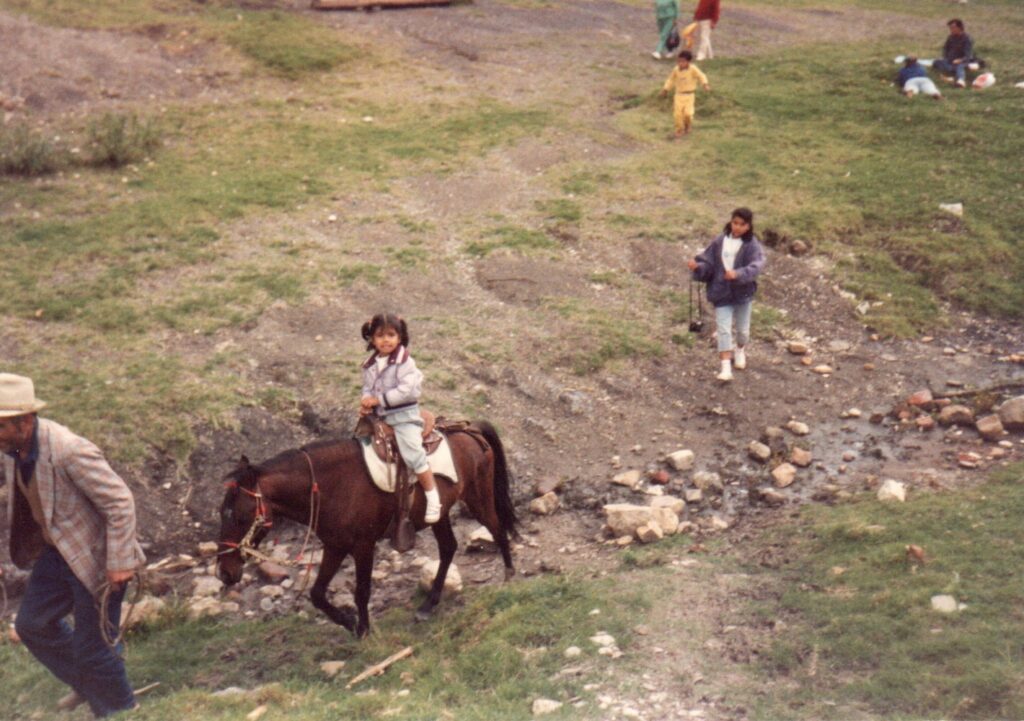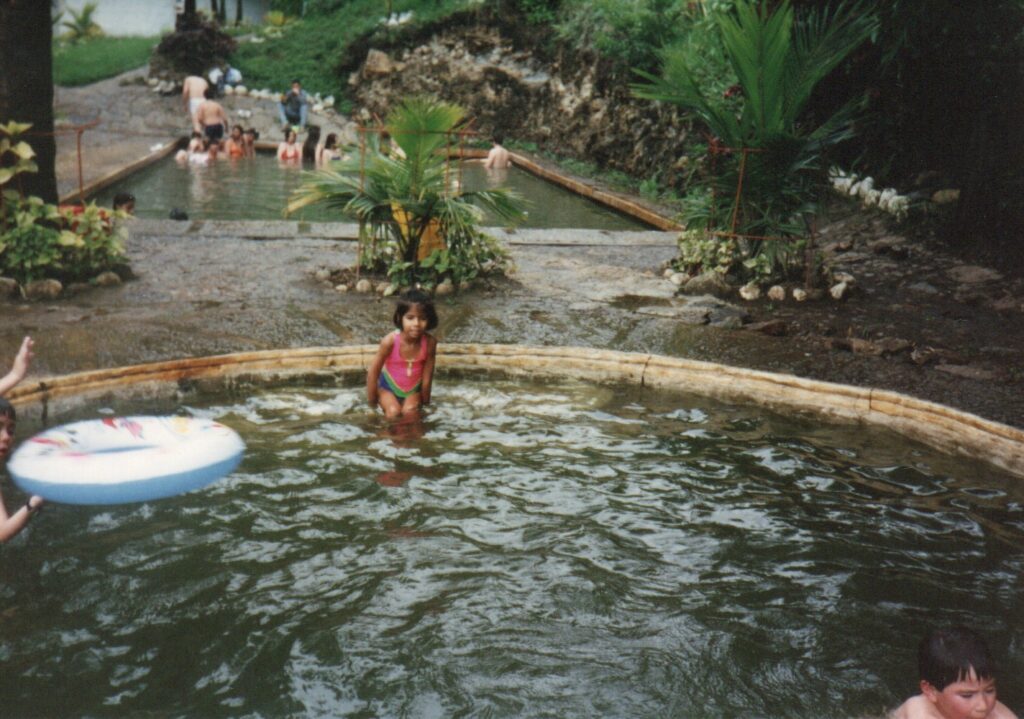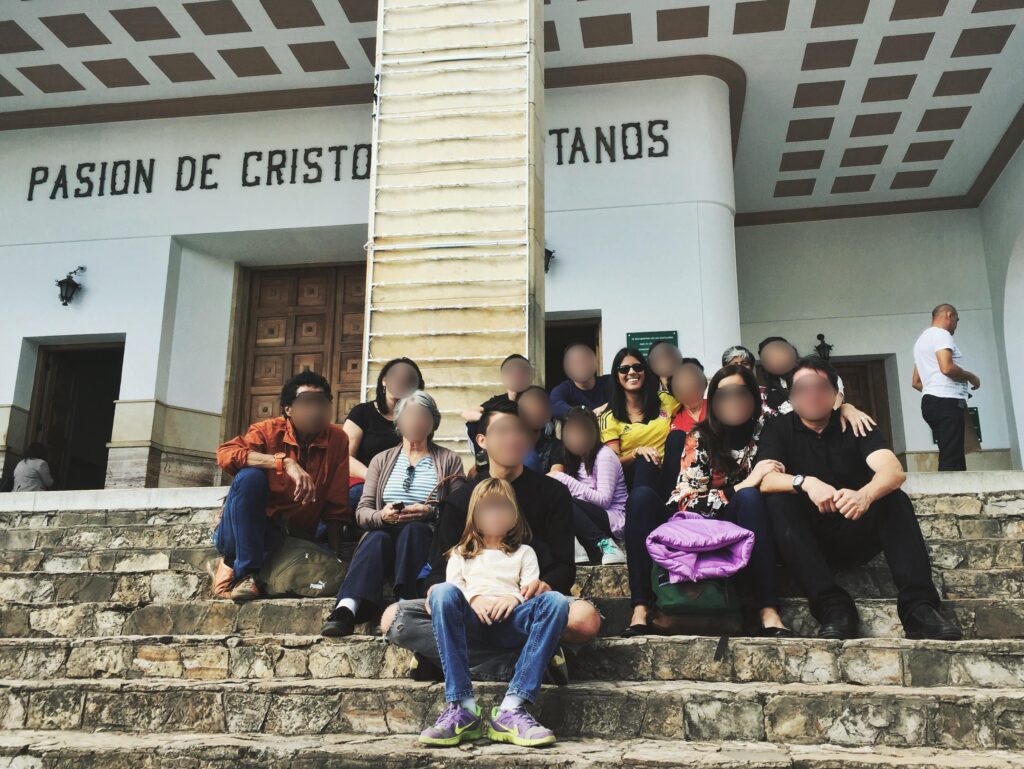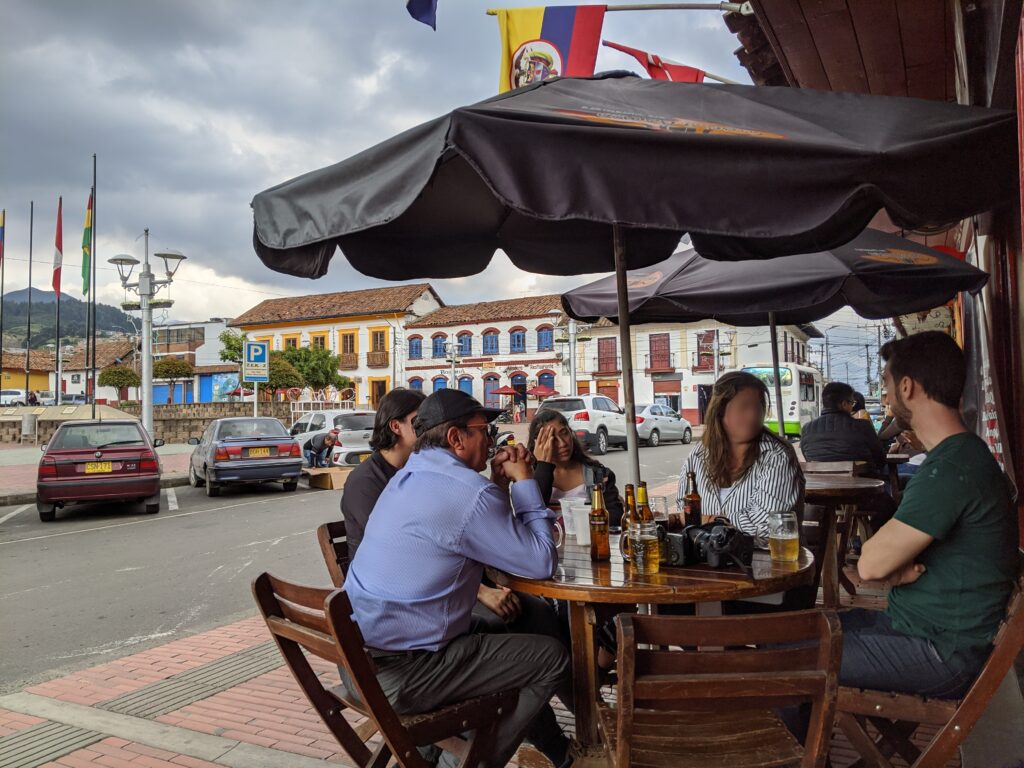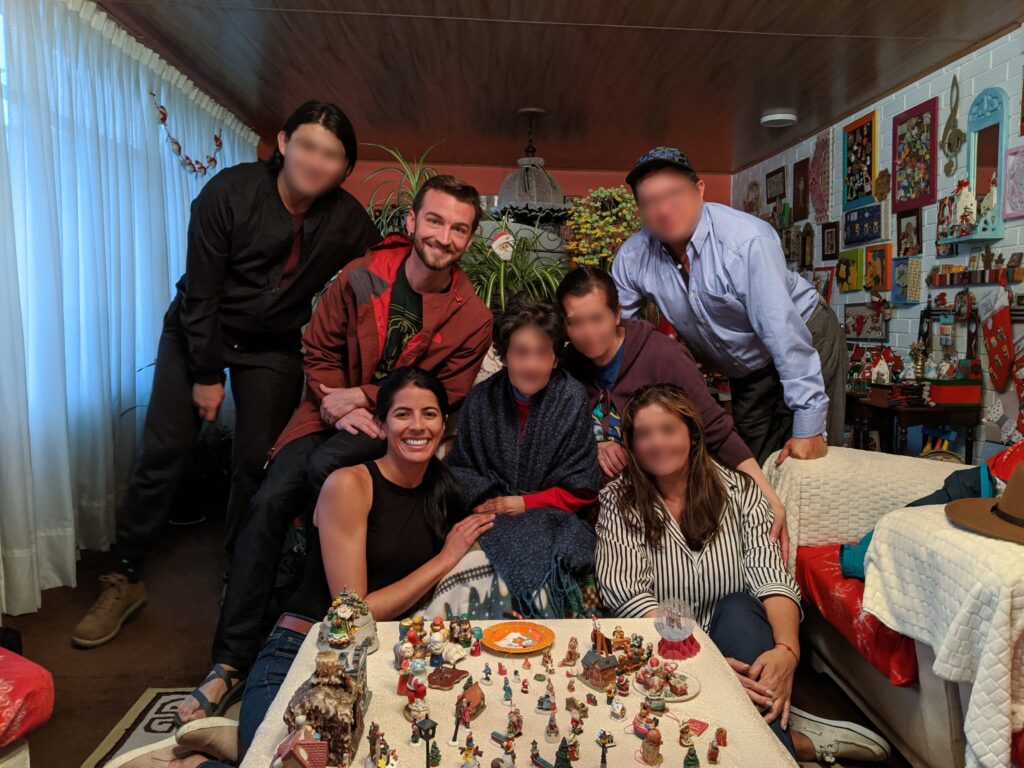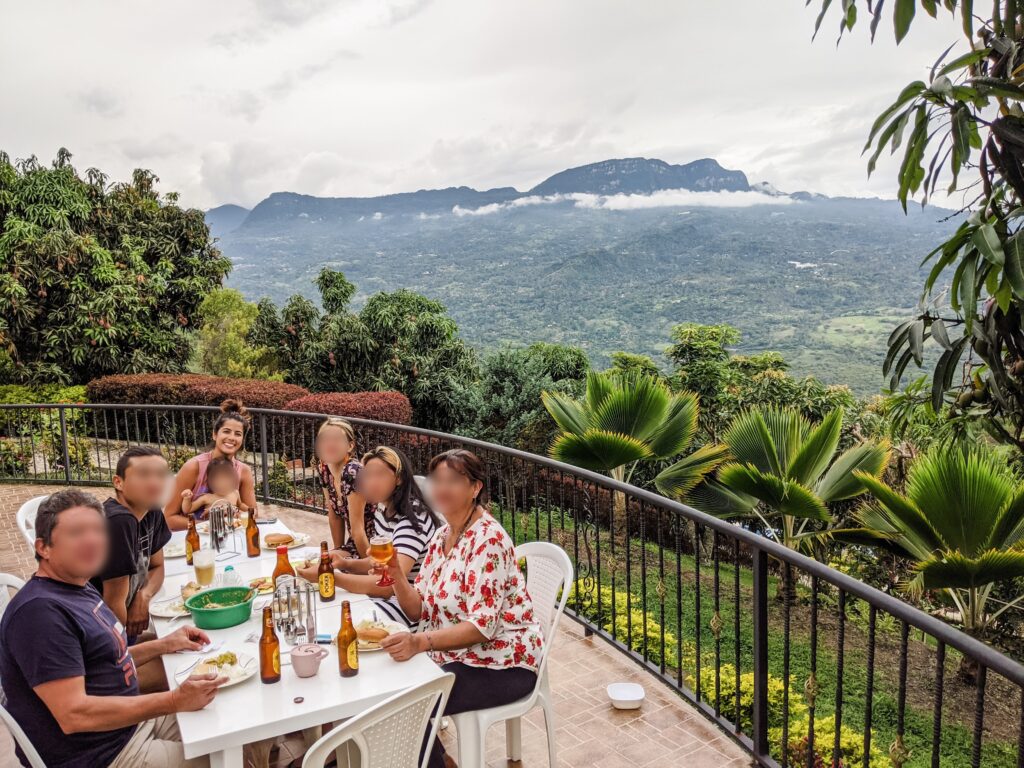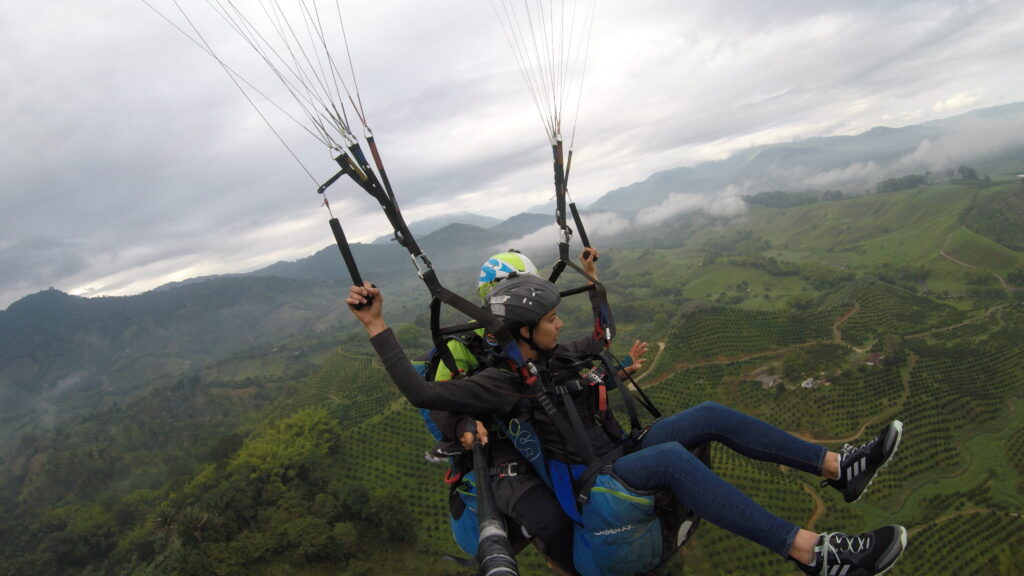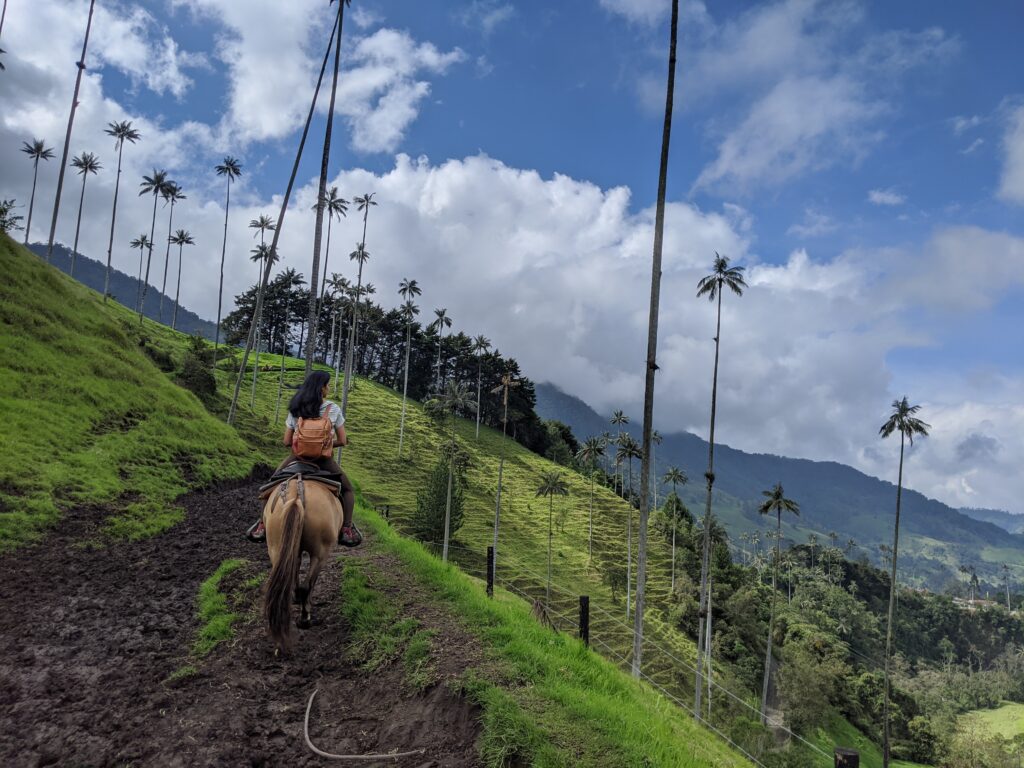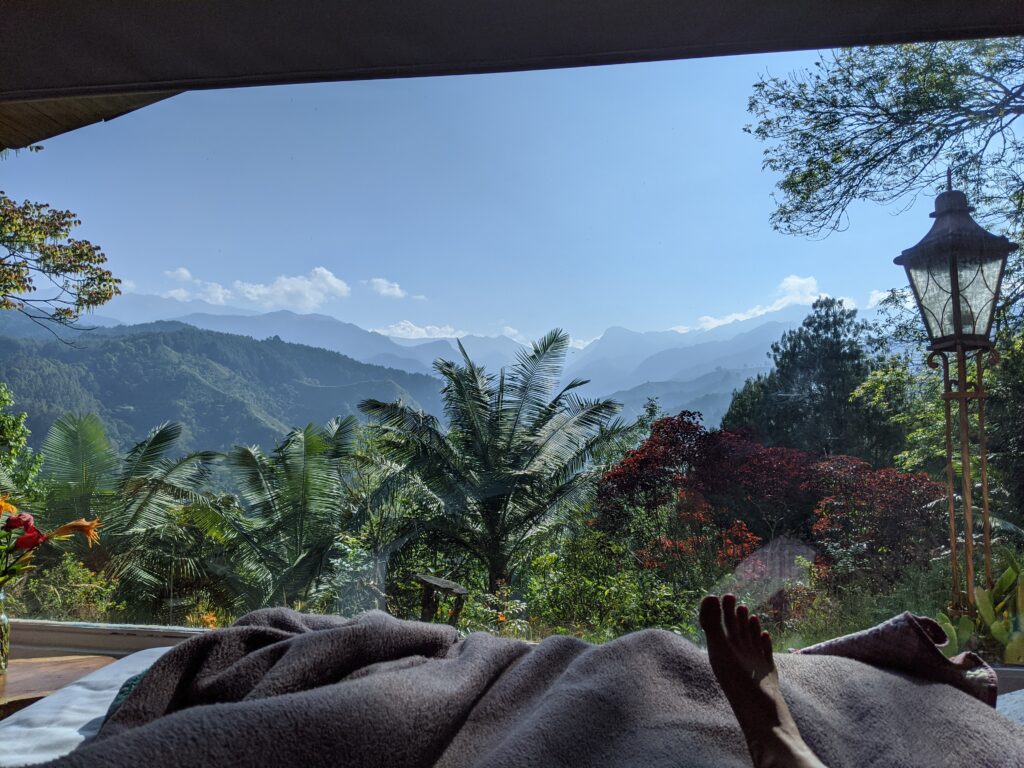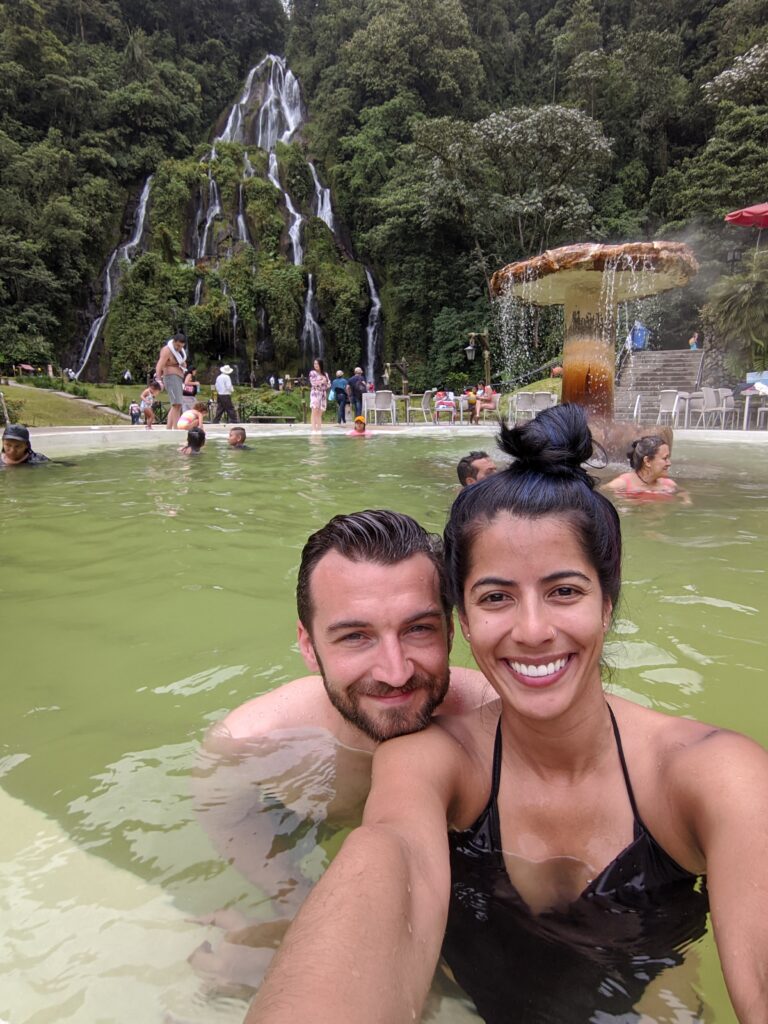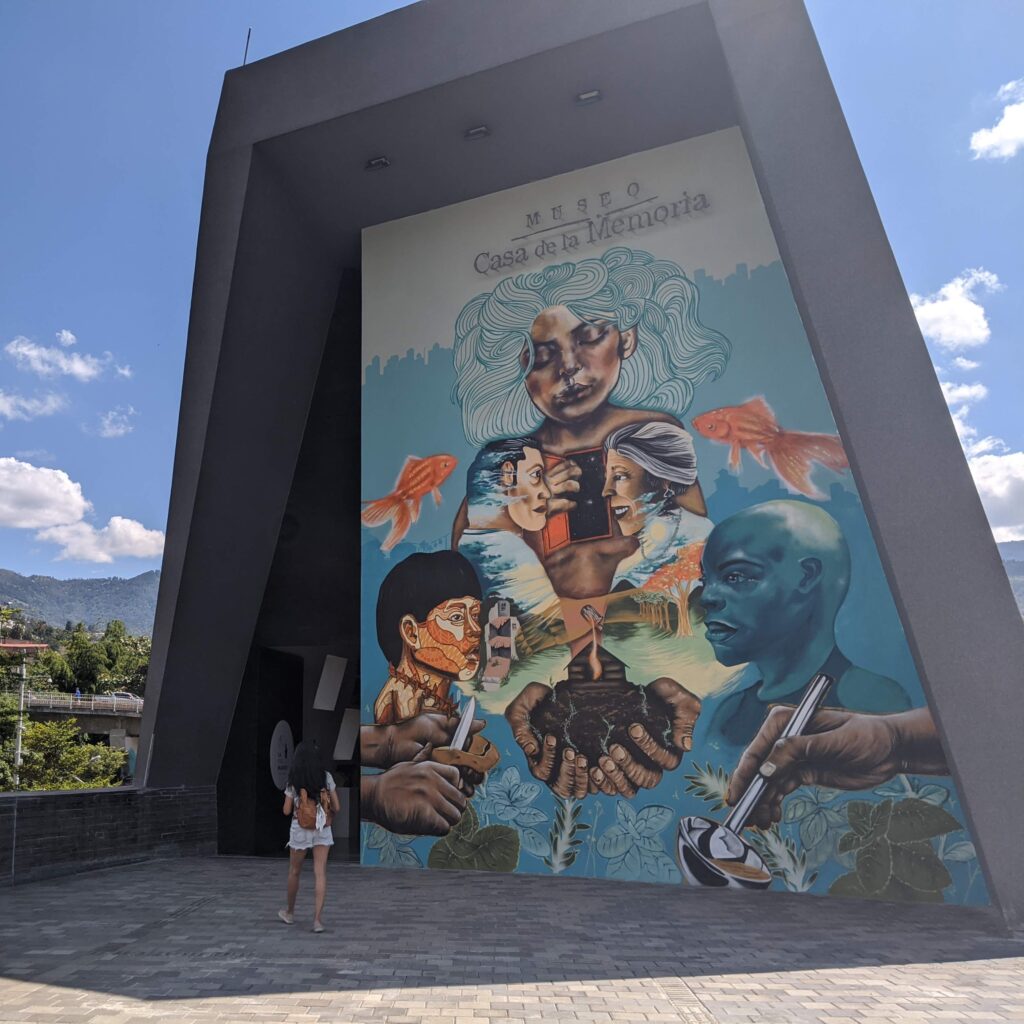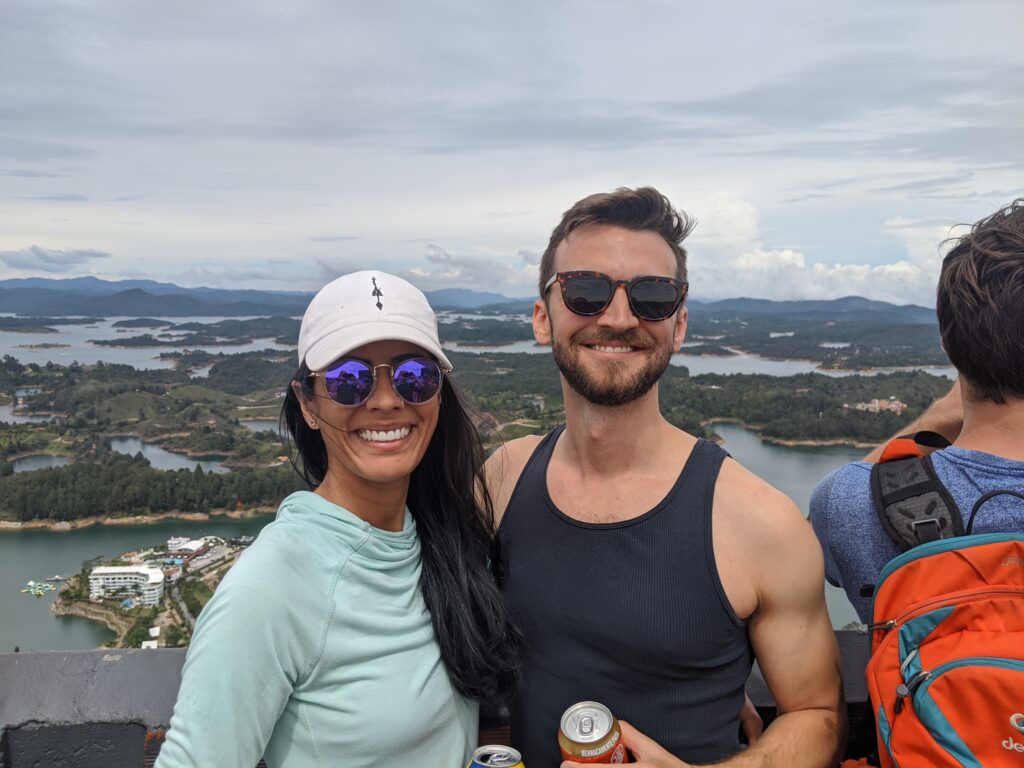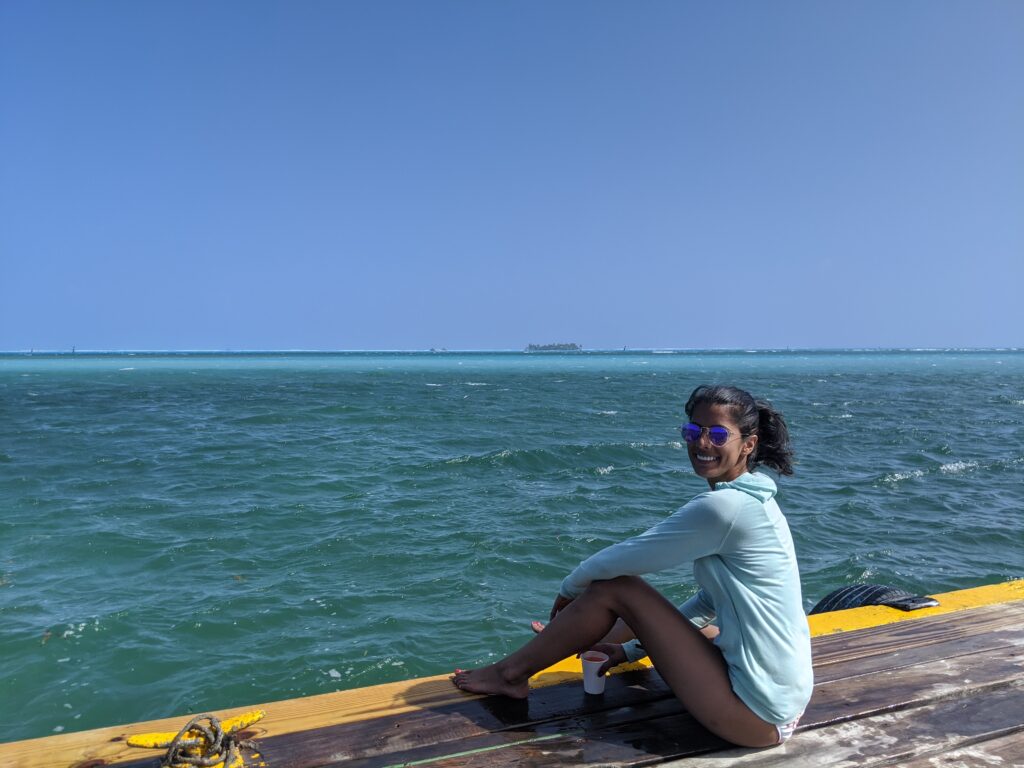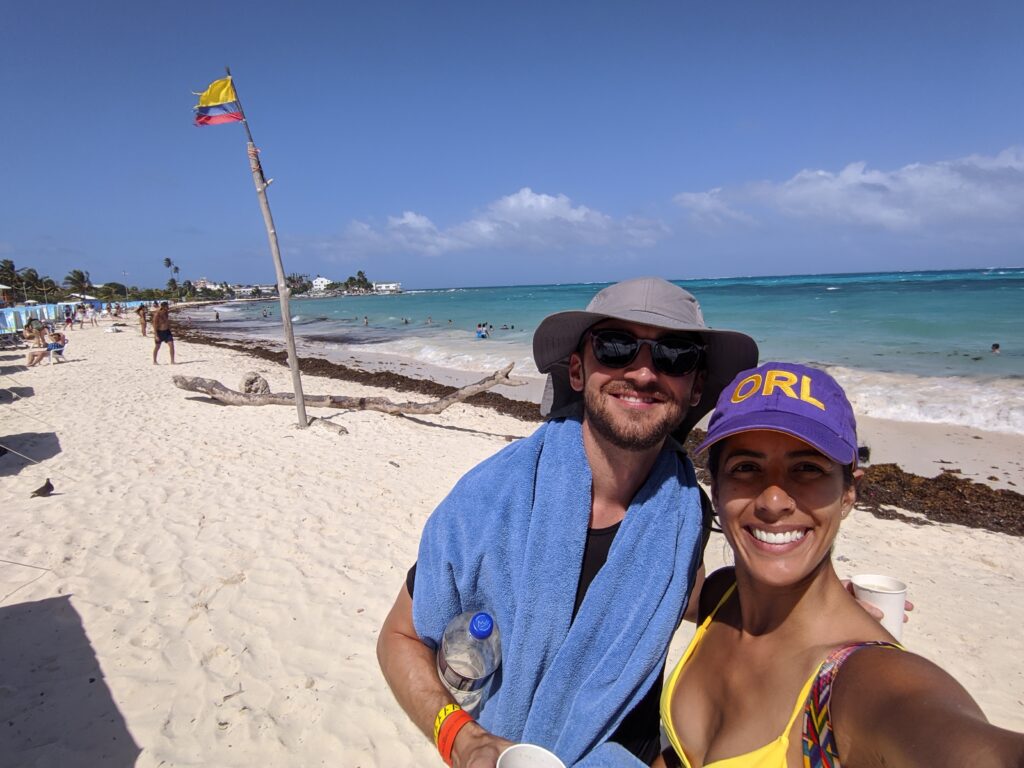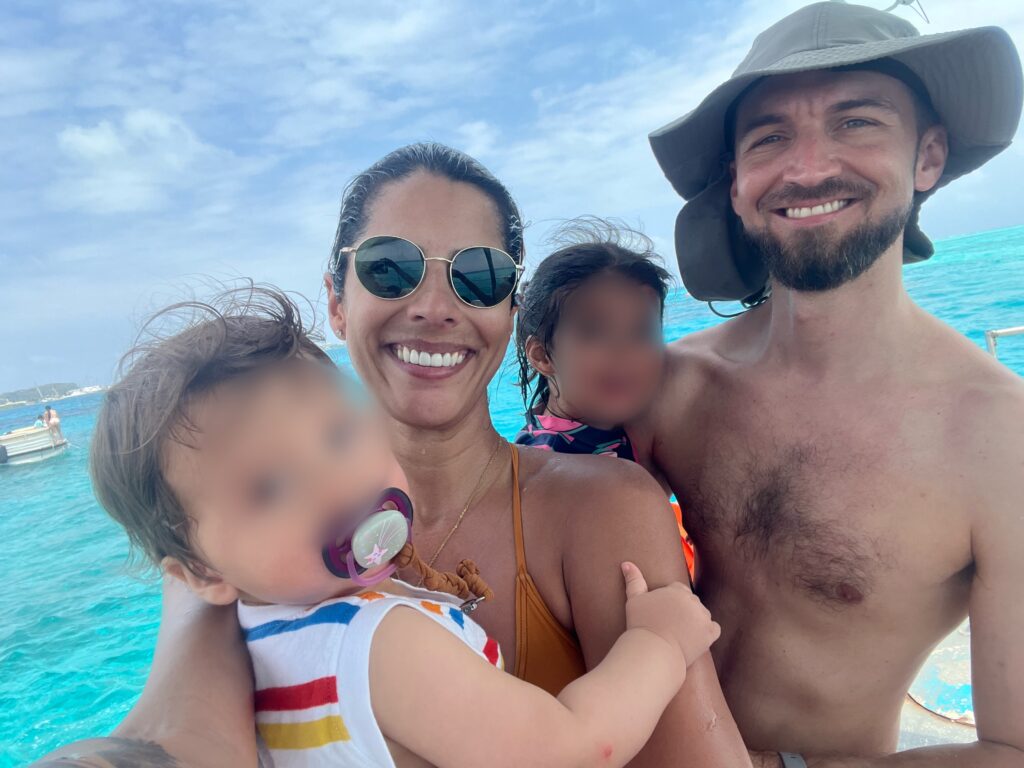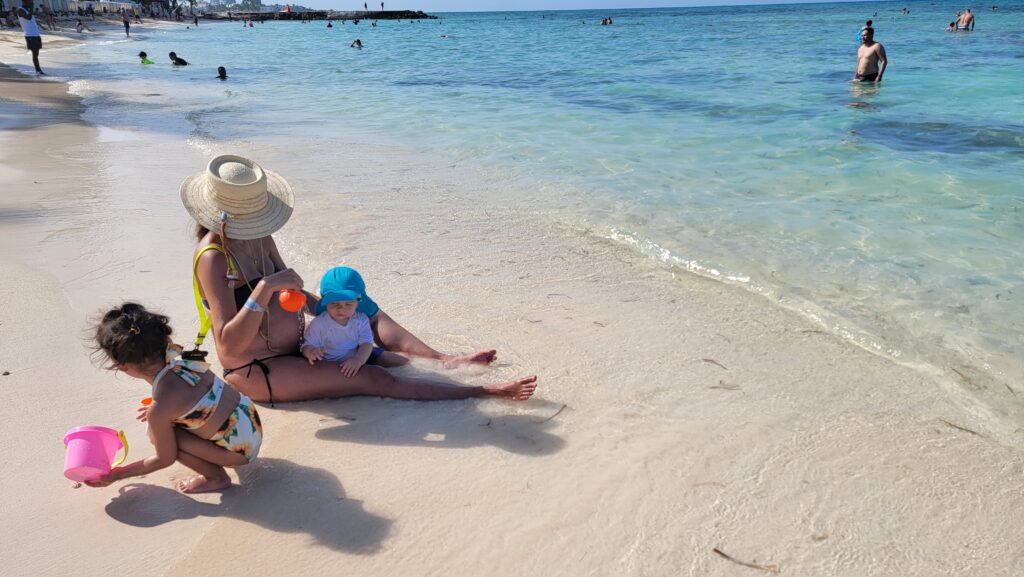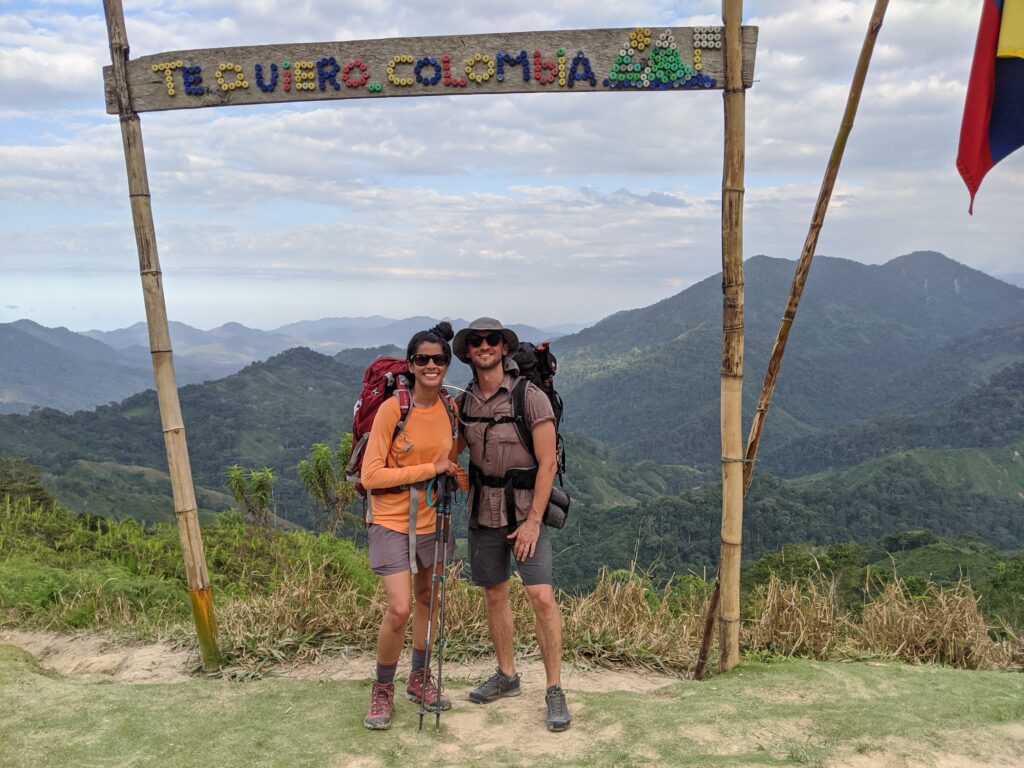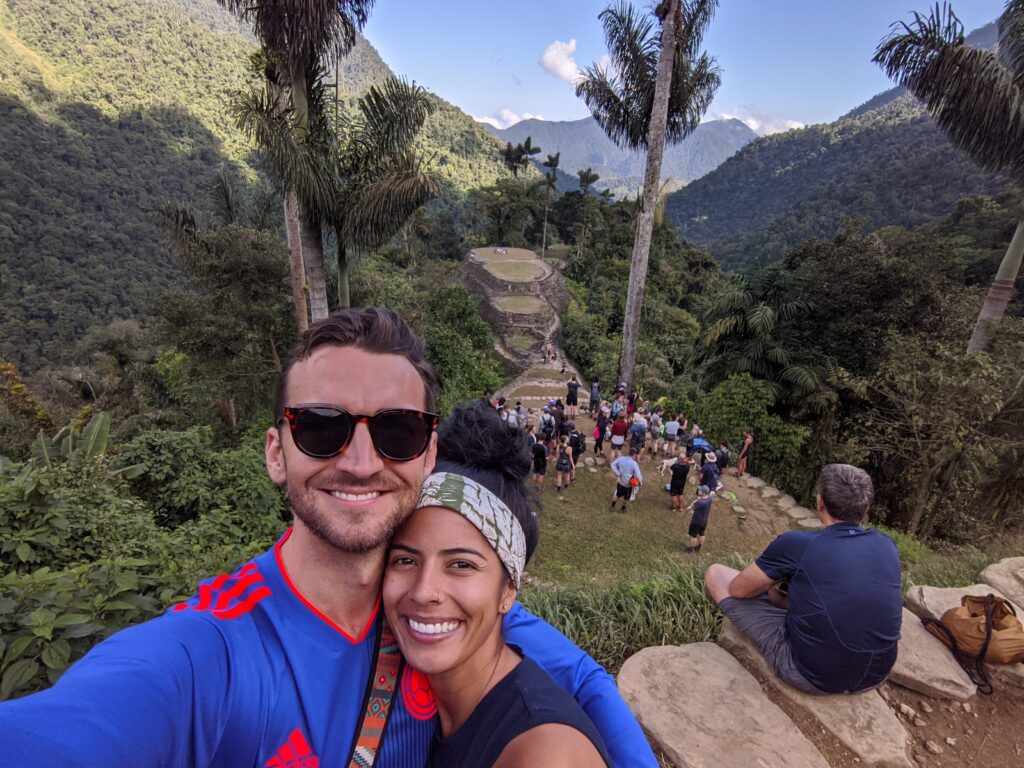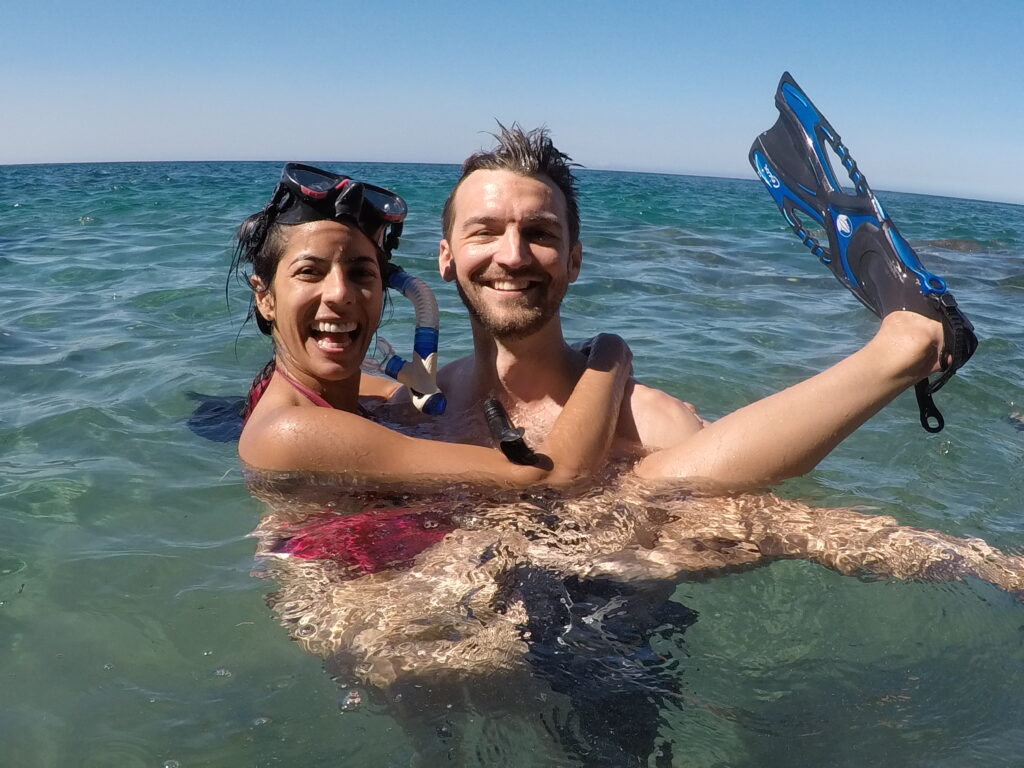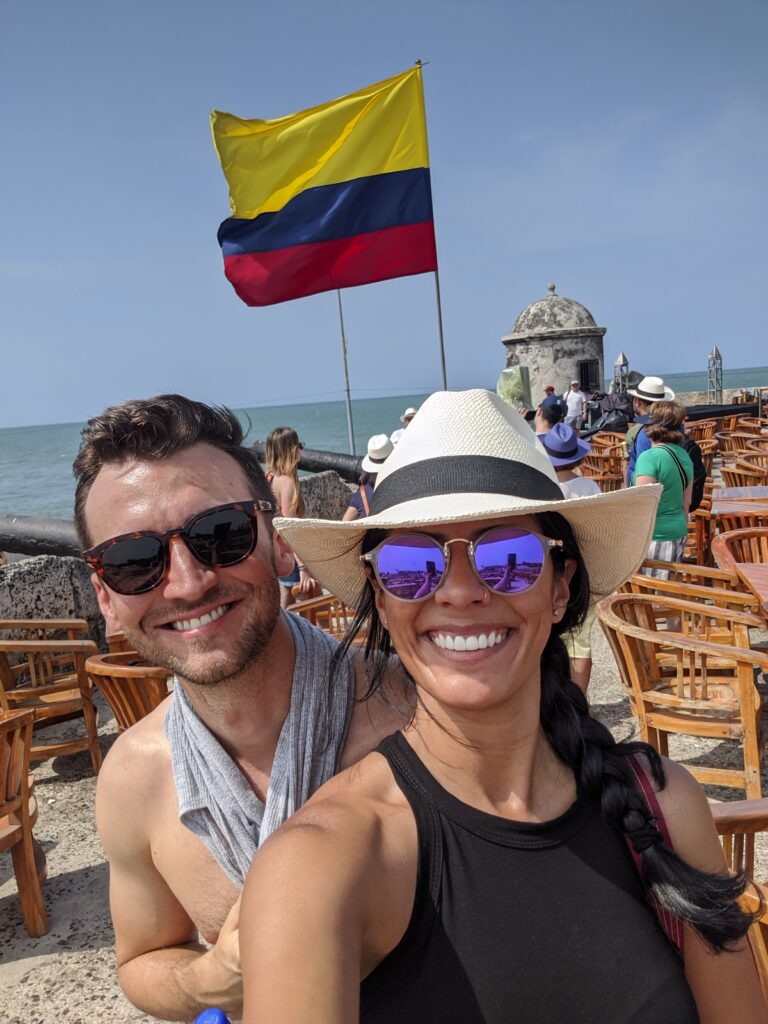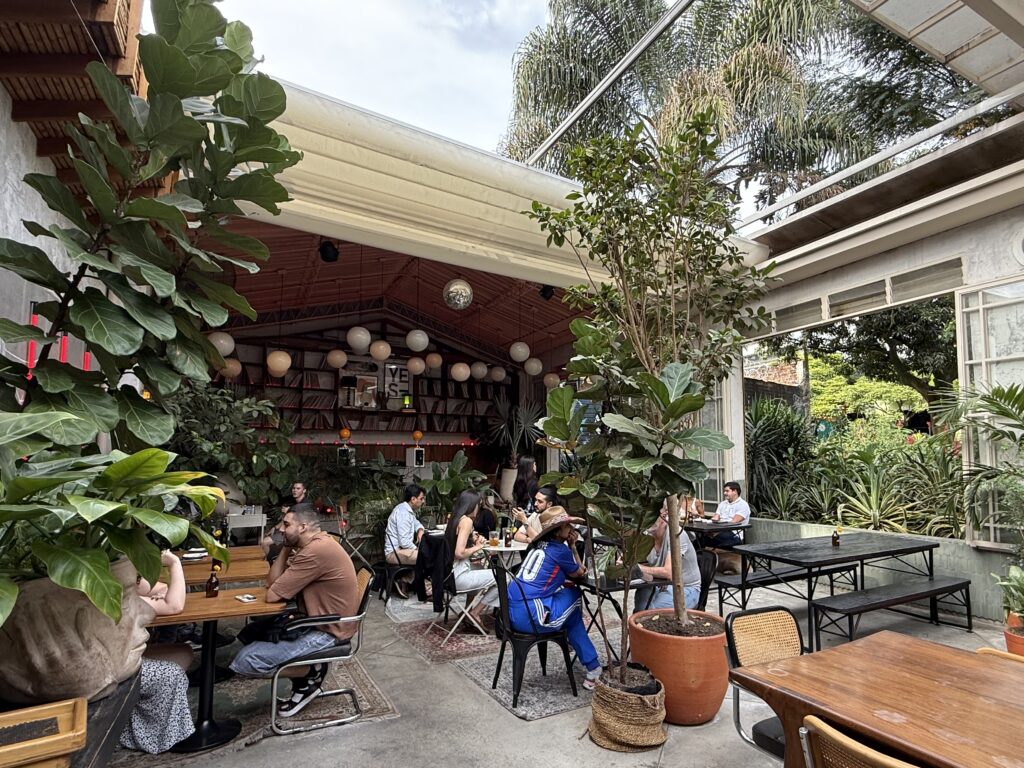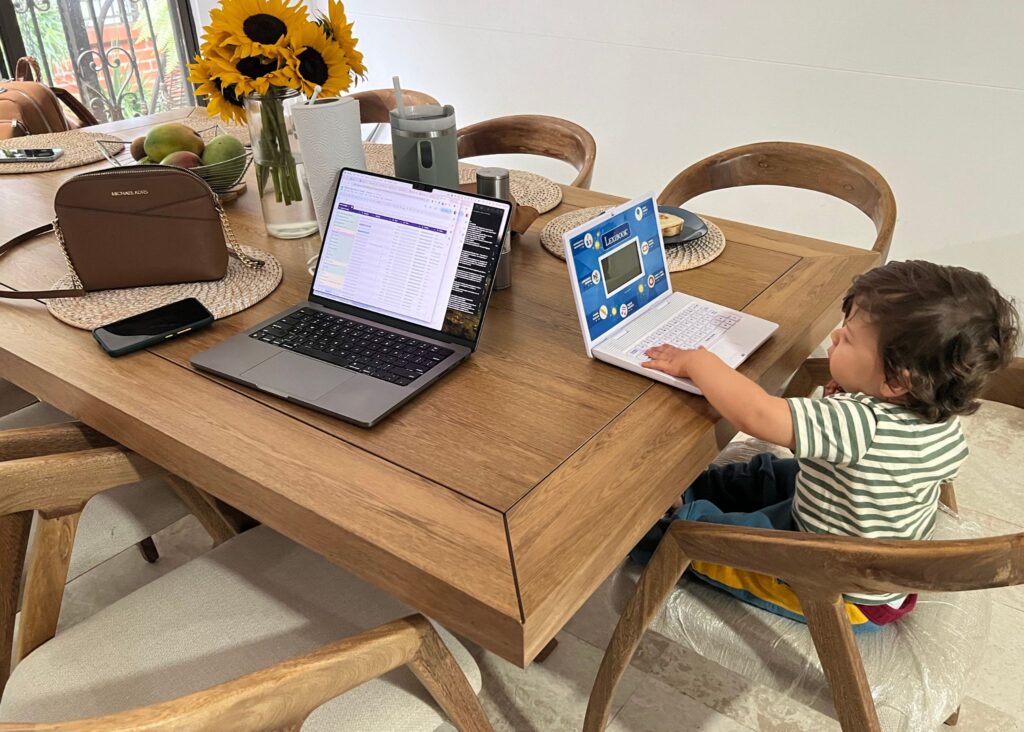Relocating to Medellín with Kids: Why I Moved and How It’s Going

These questions come up quite a bit in both the United States and Colombia. Even Colombian family members were confused and surprised when we told them about the move, but it’s been a few years in the making: my partner and I are fortunate enough to work in fields where remote work is possible, so it was always a possibility; I’m lucky to have Colombian citizenship, which greatly helps alleviate visa concerns; and I’ve moved around enough to know that if it doesn’t work out, we can always go back. These are the top 4 reasons why my family and I moved to Medellín:
I’d be remiss if I didn’t include some of the challenges that have come with the move, so to keep things honest, I’ve also added:
- Obstacles + Adjustments
- Getting Acclimated
- Visas
- Pollution
- Safety
Cultural Connection
My mom was born and raised in Bogotá, Colombia. Growing up, my family and I spent many summer vacations visiting the relatives who chose not to immigrate to the U.S. Once my Abuelita (grandmother), started spending more time in the States, we traveled to Colombia less often. Though, I’d always felt a strong pull to return to spend more time in Colombia. It wasn’t until my mid-20s that I prioritized trips back, visiting almost every other year until moving to Medellín in my mid-30s.
In my 20’s, I applied for and received my Colombian citizenship as the child of a Colombian citizen. I didn’t have a specific move date in mind but knew I wanted to try living here at some point. I also figured it would be much easier to do as a citizen versus applying for various visas. I always liked the idea of raising kids in Colombia too. It was important to me that they be close to our roots, celebrating the culture through dance, food, holidays, speaking Spanish, and exploring the beautiful biodiversity of Colombia. Some of my favorite childhood memories are times we spent with family, in the mountains, or enjoying one of many aguas termales, or hot springs.
My partner and I spent five weeks in Colombia on our honeymoon at the end of 2019. That trip solidified our decision to eventually move here. Although we still didn’t have a set date, we figured it would be sometime after our first child was born. She arrived in Spring 2021, and we moved to Medellín in December 2022.
Why Medellín over Bogotá? I prefer the climate (it’s called the “City of Eternal Spring” for a reason) and the general ambiance of Medellín. I love being tucked in the Aburrá Valley. Although the pollution can be intense at times, the city has implemented a green corridor program to combat it along with the rising heat.¹ You’ll see lots of vertical gardens, shady tree overhangs over main roads, and huge monsteras growing freely on the hillsides. It’s gorgeous.
We still have family in Bogotá and love to visit. It’s a quick one-hour flight from Medellín. Bogotá combines Washington D.C.’s government vibes (as it’s the capital of Colombia) with the dense urban environment of New York City. As of 2024, Bogotá has a population of about 11.6 million, whereas Medellín has about 4.1 million.²
Explore Colombia
Colombia has it all: snow-covered volcanoes, the Andes mountain range, crystal-clear tropical beaches on both the Atlantic and Pacific oceans, 5 very different deserts, Ciudad Perdida, or “The Lost City”, that predates Machu Picchu by about 650 years, the Los Llanos grasslands, and of course, the Colombian coffee region and the Amazon rainforest.
Nature Facts About Colombia:
- Biodiversity: Colombia is the second most biodiverse country in the world. Per square kilometer, it’s the most biodiverse.³
- Species: According to the 2019 Biodiversity Information System in Colombia, there are 51,330 species registered in the country, with more than 1,920 bird species, 528 types of mammals, and 1,521 species of fish.⁴
- Birds: Colombia has the greatest variety of birds on Earth, with nearly 2,000 species, including more than 200 migratory and 80 endemic species.⁵
- Orchids: It has the most orchids in the world with 275 genera and 4,270 species. Of those, 1,572 species of orchids are exclusive to Colombia.⁶
Colombia has the potential to rival the outdoor industry in the United States. However, safety remains a concern. While the situation has much improved since the 80s and 90s at the height of the Colombian Conflict, you still don’t have the freedom to explore the outdoors as safely as in places like Colorado, Utah, or California. Even on some local hikes in Medellín, there are stories of people getting robbed. Reasons why it’s important to keep a low profile, leave valuables at home, and go with a group.
That said, there are safe places you can venture out to, with or without guides. I’ve found safe, well-reviewed camping spots where you pay a fee to camp on someone’s property. There are also companies offering tour guide services for river rafting or hikes in or near national parks.
Since moving to Medellín, I’ve been either pregnant or adjusting to life with a newborn, which is an adventure in itself, but not the outdoor exploration I’m really looking forward to. I did spend some time in the Sierra Nevada del Cocuy last December, but couldn’t do all the hikes since I was at the end of my first trimester and honestly, I felt like shit. It was a breath of fresh air though and a quick taste of the outdoors I’d been missing. Since we shipped our things from the U.S. we have all our camping gear from our time in Colorado, and I’m eager to get outside soon and share this joy with my little ones.
And as much as I love roughing it, I am also a big fan of accommodations with more creature comforts and everything in between. There are countless pueblos with beautiful architecture and Colombian charm, historical sites, and natural wonders. There are also places throughout South and Central America we’re looking forward to visiting. It reminds me of the quote by Susan Songtag, “I haven’t been everywhere but it’s on my list.”
Affordable Cost of Living
This section could easily be its own dedicated post, but here’s an overview based on our personal experience. My partner and I both work remotely, earning U.S. dollars while spending Colombian pesos. For us, living in the U.S. is about 2-3 times more expensive than in Colombia. Here are a few examples:
Rent for a 4 bedroom/3 bath
- Medellín: ~$2,500/month in Estrato 5
- USA: ~$4,200/month (based on our former neighborhood, 20 minutes outside of Denver)
Colombia uses a socioeconomic classification system called “estratos,” ranging from 1 to 6, with 1 being the lowest income level and 6 the highest. The estrato you live in affects your utility rates—water, electricity, and gas bills are subsidized for Estratos 1-3, and the costs are balanced by higher rates paid by those in Estratos 4-6. Typically, higher estratos also correlate with higher rent.
Private health insurance: 2 adults, 3 kids
- Medellín: ~$5,150 for the year
- USA: Starting at ~$20,000/year without an employer subsidy, ~$12,000-$14,000/year with an employer subsidy
We chose SURA Global for the comprehensive coverage in Colombia and abroad, including the U.S. Some of their plans offer limited coverage while traveling, so it’s best to discuss options with an agent to find the right fit for your budget and needs.
In Colombia, there are generally no deductibles, but there are copays. For example, in my 8th month of pregnancy I woke up with serious pain in my side, later finding out it was kidney stones. I spent 13 hours in the ER, was seen by the ER doctor, a gynecologist, urologist, had 2 ultrasounds, received liquids, pain meds, blood panels and a urine test ran and left with a copay of $19 USD at checkout. That’s it. I’m not anxiously waiting for a bill in the mail to see what else I have to pay after insurance… $19 and that’s it.
In terms of quality of care, I would say that paying for private insurance comes with certain benefits as opposed to the basic EPS public health insurance. I can’t speak to it since I’ve only paid out of pocket or used our private healthcare plan, but from what I’ve heard you can be seen more quickly and care is more consistent than if you use the services and locations provided by EPS.
Full-time Nanny (salary only, not including benefits)
- Medellín: ~$500/month, w/ overtime ~$1,000
- USA: ~$3,400/month
Childcare costs are a significant factor in our decision to stay in Colombia until our youngest child is at least 5 years old and starting kindergarten. I am grateful every day for our nanny and the love and help she provides for my kids especially while I’m pregnant. Every pregnancy has been difficult and when you add in chasing toddler and infant who’s toddler-sized, it’s a lot.
Regarding quality, nannies are common in Colombia, and many have significant experience. We were fortunate to find someone with certifications in early childhood education and previous work experience at a daycare, as well as with other families as a nanny. As in the States, it’s a similar process finding someone who’s a good fit for your family and thankfully we’ve have had nothing but the best luck with niñeras here in Colombia.
Budget line items for self care spending have decreased drastically. The other day I got a dip manicure, gel pedicure, and a hair wash & blow dry for the equivalent of $61 USD total.
I could go on. The savings we incur are significant and allow us to allocate funds towards savings for ourselves and our kids, retirement, investments, travel, and extracurricular activities for the kids. I recently saw a meme about how the cost of summer day camps for one family in the US is equivalent to spending a week vacationing in an Italian villa. My oldest’s school is offering a summer day camp from 8a-2p. For 2 weeks, it costs $250 USD and includes breakfast, lunch, materials, a few field trips, everything.
Quality of Life
Short answer as a mom of 2, soon-to-be 3: Total upgrade.
Also common in Colombia and something we’re able to afford is an empleada, or employee, who helps cook and clean Monday through Friday. My partner’s always been the cook in the house so that part really helps him out the most. Cleaning has been my contribution in the relationship and let me tell you the mental load and time it’s freed up is absolutely liberating. It’s important to clarify that just because we have the help doesn’t mean we’ve stopped cooking or cleaning ourselves all together. It’s still a team effort with our empleada taking the lead. My partner can still be found in the kitchen working with her to cook dinners once or twice a week and I’m still doing loads of laundry here and there too – and, again, baking this baby is taking a lot out of me so especially thankful for the help getting things done that I just wouldn’t be able to do.
As the mom of a very young family, the help around the house is huge. I’m not as stressed about household maintenance during the week, rushing to complete them before weekend plans with the kids. It was also hard being present sometimes with my daughter while I was worrying about the mountain of things that needed to get done at home. Not anymore.
Help with household chores and the support of our nanny allows me to take my oldest to her extracurriculars where I’m able to have dedicated focus and enjoy just her for that hour while my son’s being cared for at home. Same goes for my son’s swimming class. It’s something I feel lucky to be able to participate in with the extra piece of mind the extra help affords us. Date nights are easier to plan too!
Colombia is also SO much more family-friendly than the States. Most people here love kids. I feel like the general sentiment in the U.S. is, “Your kid, your problem,” but that’s just not the vibe in Colombia. Especially when they’re infants, everyone loves to ogle. Some examples:
- Traveling with Kids: When I’m traveling within Colombia with children and they’re throwing a fit on the plane or in the airport, people aren’t scowling at my kids or giving me dirty looks. Colombians often try to help by distracting the kids with funny faces, coos, or playing peekaboo.
- Priority Boarding: When traveling, I’ve always been able to have priority boarding, while pregnant or with kids, meaning the very first group along with seniors and those who require assistance. This also applies to check-in upon arrival at the airport. Expedited service so we can let the kids burn off some energy in the lounge? Yes, please.
- Preferential Lines: There’s a fila preferencial, or preferential line, almost everywhere you go. Before you think, “Oh, there’s one in the USA too,” here people are kind enough and actually encourage you to go first. This includes pregnant persons and up until your kids are 5 or so years old.
- Handicap Parking: Handicap parking spots include pregnant persons and those with infants. You don’t need a special tag, it’s a pregnant person and person with a stroller is also painted on the parking spot with the handicap sign.
Aside from family support, many businesses offer domicilio, or home delivery, which for some services is similar to what’s available back home — but delivery usually costs us between $3-10 USD so it’s never a question of whether it’s worth it like it is in the States. This applies to pick-up and drop-off services like dry cleaning, baby gear cleaning, and rug deep cleaning, as well as at-home services such as massages, acupuncture, haircuts, nails, and blood draws. There’s even a domicilio doctor’s service we’ve used several times for non-ER emergencies for the whole family when we needed immediate care but couldn’t get an appointment with a doctor or pediatrician due to scheduling or needing help after hours. They’ve arrived within an hour of messaging them and the total cost is typically $40-65 USD.
Obstacles + Adjustments
Getting acclimated
This goes for any move, but depending on how good your Spanish is, it can be especially challenging. Then there’s a steep learning curve on how to do it all! For example, scoring the best home rental without being price gouged just because you’re a foreigner. If you’re hiring any kind of help such as a niñera or other empleadas, it’s very important to note they are owed prestaciones sociales, or social benefits, that must be paid by you, the employer. If not, you run the risk of being sued for what they’re owed and then some. When applying for out-of-home childcare options like guarderías (daycare), jardines infantiles (preschool), or other schools, the application process for private schools is very thorough and waitlists can run anywhere from a few months to over four years.
Then there’s the normal finding your physicians, pediatricians, dentists for you and your kids, and specialists you might need, new barber shop or hair salon, and so on. If you’re looking for more English-speaking providers, they do exist but your options might be more limited.
This Facebook group, Medellin international moms (and friends), is a really great resource for those considering the move or already here. I would strongly recommend first searching previous posts. It’s very likely your questions have been answered before. If you’re not sure how to search previous posts, this link explains how.
Visas
My children and I have dual citizenship for the United States and Colombia. It’s my partner who needs to go through the visa process so he can stay more than 180 days per calendar year.⁷ The top two options for non-Colombian family members are the Visa M as the father of Colombian children or the Visa M spouse visa. When you’re approved, your visa is valid for the allotted time they give you. For example, the spouse visa could be granted for up to three years, but my husband only got approved for one year initially. The next time we applied, it was approved for two years. It’s important to start the reapplication process at least three months before your current visa expires. You might be able to apply for extensions, but you’ll likely just create more work and headaches for yourself. Plan ahead, you’ll thank me later.
It’s entirely possible to apply on your own, but we’ve hired a lawyer to do it on our behalf. Our first six months here were hectic, with adjusting to life with a then 1.5-year-old, my pregnancy and delivery with my second, finding a long-term rental, buying a car, and coordinating with the shipping companies for the arrival of our container from the United States. We didn’t want another thing to manage and needed to ensure our application was done correctly and on time.
For most visa applications, you need to work with Migración Colombia to get documents for the application itself, and once you’re approved, you go there to get your cédula (Colombian ID). Not sure if all government agencies are like this, but our experience with Migración was next-level hard and confusing. That was partly due to the law offices we used, and I absolutely would not recommend going with large firms like Langon that treat you like a number. We’ve since heard more people have positive experiences with small, private practices, and our experience affirms that.
When working directly with Migración, it’s just consistently inconsistent. You should mentally prepare for anything and definitely not expect to get what you need on the first try. The website to schedule your appointment isn’t always working, and you might have made a payment thinking you were good for the time you paid for, but when you arrive, they tell you to go back online, make another appointment that’s not available for another month, pay again, and then come back. They were also less helpful with my husband, but when I intervened, we made some progress.
And it’s not just with government agencies like Migración, the notaría (notary), or the passport office. Even trying to simply open a bank account is notoriously difficult for some. It really depends on the day and who you’re talking to to get what you need done. Rules seem to be applied somewhat arbitrarily. It can be incredibly frustrating, but if you set the proper expectations, hopefully, it’ll be a little less disorienting.
If you’re interested or applying for the Digital Nomad visa, my friend Liz put together a comprehensive how-to guide you should check out after going through the process for her family of 5.
Pollution
Medellín is located in the Aburrá Valley, and valleys can trap pollution, especially during dry seasons. The primary contributing factors here are vehicle emissions and industrial factories. Medellín actually emerged as an industrial hub in Colombia for textiles in the late 19th and early 20th centuries and continues to contribute significantly to the city’s economy today. The city is very aware of the high density of cars, buses, and motorcycles, many of which use diesel. To mitigate this, Medellín, and other cities in Colombia, have implemented a program called “Pico y Placa,” which restricts vehicles from being on the road during certain hours on specific days of the week based on the last digit of their license plate. Additionally, the green corridors program I mentioned earlier was created to help absorb pollutants, provide shade, and cool down urban areas.
The pollution issue is getting worse. If you’re located more centrally in the city, near or along the Medellín River, you’ll feel it more than those living along the hillsides and outskirts of the city. If you or your family members have respiratory issues, this is something you’ll definitely need to consider when making the move or choosing which barrio to live in.
Safety
Colombia has a saying, “No dar papaya,” or “Don’t give papaya,” which means don’t give people any reason to pay you any mind or put yourself in vulnerable situations. This includes not wearing flashy jewelry, keeping your phone and wallet in a forward-facing fanny pack, and if you’re lost and trying to get your bearings, walking into the closest coffee shop or restaurant instead of sticking your phone out like you’re E.T. trying to phone home.
Keep in mind that touristy areas are very different from where locals go. Especially with our young family, we’re not visiting touristy places like Comuna 13 or partying in Provenza. A lot of the travel advisories are geared towards cities along the Colombia-Venezuela border, which are very far from us. These advisories are also more relevant for those coming to Medellín specifically for sex workers or using dating apps like Tinder, who then get drugged with scopolamine and wake up disoriented with all their valuables stolen, or in some cases suffer a fatal overdose.
Even as a local, I would be cautious with things like keeping your car windows down in certain neighborhoods and definitely keeping them rolled up at night. I witnessed a swift theft by people on motorcycles at 9pm on a Wednesday evening. The passenger on the motorcycle popped himself right through the back seat window of a car that had the window all the way down, grabbed what he wanted, and the driver sped off after.
Maybe surprisingly, I feel very safe, especially when I’m out and about and with my family. It’s important to recognize that my experience as a half-Latina will be different than someone who’s tall, blue-eyed, and blonde-haired. However, violent crime is exceedingly rare in much of the city. There are rough neighborhoods, sure, but gun crime and drugs don’t permeate the city the way they do in many American metropolises. And even friends who don’t look Latino have expressed how kind and friendly people are, especially to their children. People look out for each other here.
If there’s more your looking for or curious to know about relocating to Medellín with your family, please comment below and I’d be happy to help if I’m able!
Sources

MEET SARAH
Welcome! I’m Sarah. I started this blog to be a resource for others around a few of my favorite things: living in Colombia, DIY projects, places traveled, and day-to-day life. My hope is that it can a place of inspiration and encouragement to help you plan the next project or adventure of your own!
